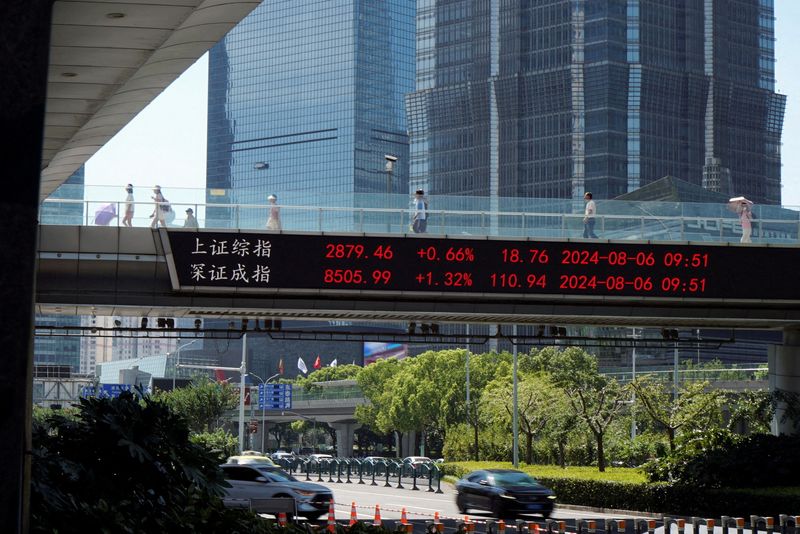By Jamie McGeever
(Reuters) - A look at the day ahead in Asian markets.
Investors in Asia could be forgiven for going into Tuesday's session with a high degree of trepidation, as markets get pulled by a plethora of local and global forces in all sorts of directions.
Rare political instability continues to weigh on Japan's markets after Sunday's inconclusive general election, while Chinese markets digest yet another push from the People's Bank of China to inject liquidity into the financial system.
The global backdrop is looking unnerving too. Optimism around the U.S. megacap tech earnings this week and oil's 6% slide on Monday are boosting risk appetite, but the relentless rise in U.S. bond yields and looming U.S. election warrant caution.
Something may have to give: Do the Treasury market bears and equity bulls retreat, or not? And if they do, what will the catalyst be? It's not clear.
What is clear is that the rise in U.S. bond yields shows no sign of slowing, much less reversing. Not yet, anyway. Yields hit new multi-month highs on Monday, with the $139 billion sale of two- and five-year debt also putting downward pressure on prices.
The 10-year yield touched 4.30% and is now up 64 basis points since the Fed cut rates on Sept. 18. According to Jim Bianco at Bianco Research, that is the biggest rise following the first cut in a Fed easing cycle since 1989.
Despite that, Wall Street rose on Monday, providing bulls in Asia with some encouragement.
Tuesday's Asian calendar includes unemployment data from Japan and Singapore, and minutes of the Bank of Korea's policy meeting this month, when it cut rates for the first time in over four years. Thailand's finance minister and central bank governor will discuss next year's inflation target.
In Japan, swaps market pricing shows 'no change' from the Bank of Japan on Thursday is a near certainty. Six basis points of rate hikes are priced in for December's meeting, and only 35 bps in total by the end of next year.
That would be a very gradual tightening cycle. Set against a more hawkish Fed in a U.S. 'soft' or 'no landing' scenario, the yen's upside may be limited.
U.S. rates traders continue to pare back Fed expectations - only 120 bps of easing now priced in by the end of next year, down 15 bps in the last few days. Little wonder the dollar is on course for its best month since April 2022.
Officials in China, meanwhile, will be hoping investors warm to the PBOC's new lending tool, which could inject liquidity into the market ahead of the expiration of nearly 3 trillion yuan, or $406 billion, in loans at the end of the year.
Here are key developments that could provide more direction to markets on Tuesday:
- Japan unemployment (September)

- South Korea central bank minutes
- Thai finance minister and central bank chief speak